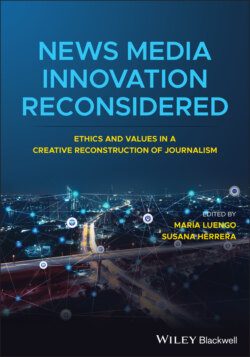Читать книгу News Media Innovation Reconsidered - Группа авторов - Страница 22
Immersive Journalism
ОглавлениеImmersive journalism tells stories through virtual reality (VR), augmented reality (AR), or 360-degree video and allows the user to become part of the story through a great variety of experiences. These formats raise important ethical issues (Pérez-Seijo and López-García, 2019), such as:
To what extent producers can modify the recorded content, altering elements of reality or making up scenes, so that the story works better.
Users’ exposure to content of a sensitive nature, including the use of violence, emotional abuse, obscene language, or explicit sex scenes.
The manipulation of emotions that influence the users and arouse feelings of adherence or rejection to ideas or institutions.
Business interests of companies that produce VR content or finance immersive experiences.
VR environments could become incubators for manipulation and propaganda, and for this reason, being unaware of the journalist orchestrating highly persuasive content could undermine the credibility of VR narratives (Kool, 2016). The use of VR technology raises complex ethical questions that require careful consideration by the producers of these formats to preserve journalistic standards (Pérez-Seijo and López-García, 2019).
